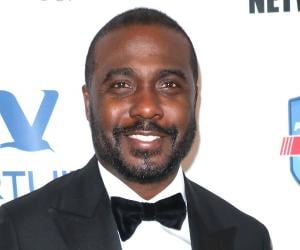

New football, track, and soccer stadium seating were added, as well as construction on the Balf–Savin baseball field. Arute Field and its adjacent practice and baseball fields also underwent extensive construction and renovation from 2010 through the present, including new football, soccer, track, and practice field turf. In 2011, the first floor of the Elihu Burritt Library was renovated to create a new common area with seating, couches, computers, and food vendors. The Office of Residence Life is located on the first floor of the new facility.ĭuring the past several years, the new $37-million Social Sciences Hall, 4,300-square-foot Bichum Engineering Laboratory, and 12,500-square-foot Campus Police Station opened. The $82 million dorm features "suite" style rooms, in addition to a 2,000 square foot fitness facility, a kitchen on each floor, and a server kitchen and main lounge with a fireplace on the main floor. Residence halls can accommodate up to 2,500 students in nine residence halls in two quads, which are split between the north and south ends of campus.Ī new eight-story residence hall (Mid Campus Residence Hall) opened for occupancy in the Fall of 2015. New building projects have expanded liberal arts classroom space and made significant upgrades to all sports facilities. Īdministrative offices, including Admissions, the Registrar, and Financial Aid are located in Davidson Hall. Fitness classes are freely available to students in Memorial Hall and fitness equipment is provided in four locations across campus through RECentral. Welte contains the main auditorium and Kaiser Hall houses the main gymnasium, and houses an Olympic-size pool. Welte Hall, Maloney Hall, and the Student Center function as large gathering areas for events, music performances, and theater productions. Additional computers and laboratories are spread across all of the academic halls. Dining facilities are located in Memorial Hall, Hilltop Dining Center, and the Student Center. Computer labs are available throughout campus, the largest of which is located in Marcus White Hall. Facilities įacilities include 10 academic halls, the Student Center, the Burritt Library, and numerous laboratories. A number of doctoral degrees are also offered. These include programs in accountancy, education, literature, international studies, engineering technology, and information technology. Graduate programs are in all of the academic schools. Another 501 part-time instructors also teach at the university. There are over 400 full-time faculty, 83% of whom possess the terminal degree in their field. News & World Report for 2022 ranked the university tied #105 in Regional Universities North. Organizational governance changed in 2011 when the Connecticut Department of Higher Education was dissolved and replaced by the Office of Higher Education and the Connecticut Board of Regents for Higher Education. In 1983, the school transitioned from a college to a regional university and thus became Central Connecticut State University.

The school was again renamed in 1959, becoming the Central Connecticut State College.

In Fall 2023, the university unveiled its new logo. In 1922, the campus moved to its current location on Stanley Street. In 1933, the Connecticut General Assembly created the Teachers College of Connecticut and the first bachelor's degrees were granted. Two years later, the Normal School resumed its services and continued to do so until the 1930s. It ran until 1867 when the school was temporarily closed due to opposition in the Connecticut General Assembly. It was the sixth normal school in the United States and is the oldest public university in Connecticut. History View over campus from the west Vance Academic Center Copernicus Hall Student Center Elihu Burritt LibraryĬentral Connecticut State University was founded in 1849 as the State Normal School to train teachers. The school is part of the Connecticut State Colleges & Universities system (CSCU), which also oversees Eastern, Western, and Southern Connecticut State Universities. More than half of students live off campus and 96 percent are Connecticut residents. As of Spring 2022, the university was attended by 8,898 students: 7,054 undergraduate students and 1,844 graduate students.
#Central state university notable alumni professional
It is made up of four schools: the Ammon College of Liberal Arts and Social Sciences the School of Business the School of Education and Professional Studies and the School of Engineering, Science, and Technology. Founded in 1849 as the State Normal School, CCSU is Connecticut's oldest publicly-funded university. Central Connecticut State University ( Central Connecticut, CCSU, Central Connecticut State, or informally Central) is a public university in New Britain, Connecticut.


 0 kommentar(er)
0 kommentar(er)
